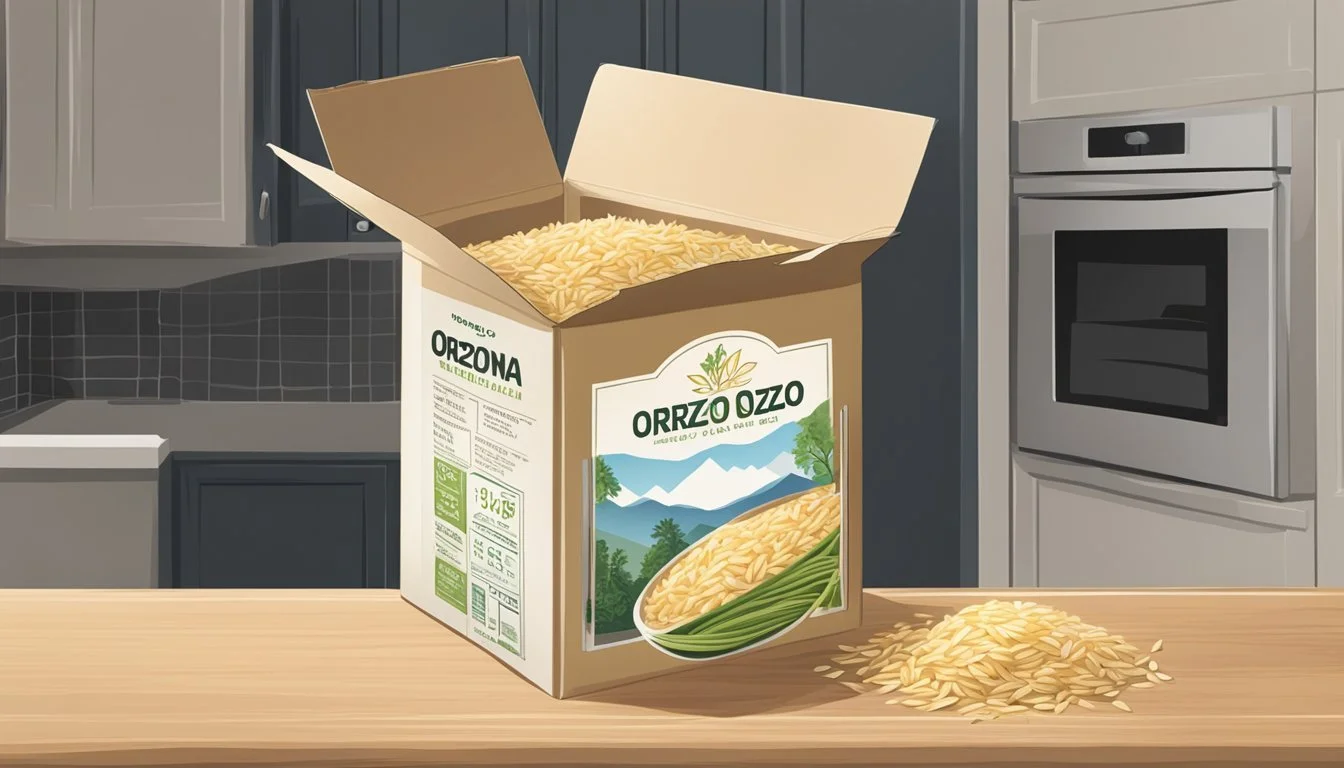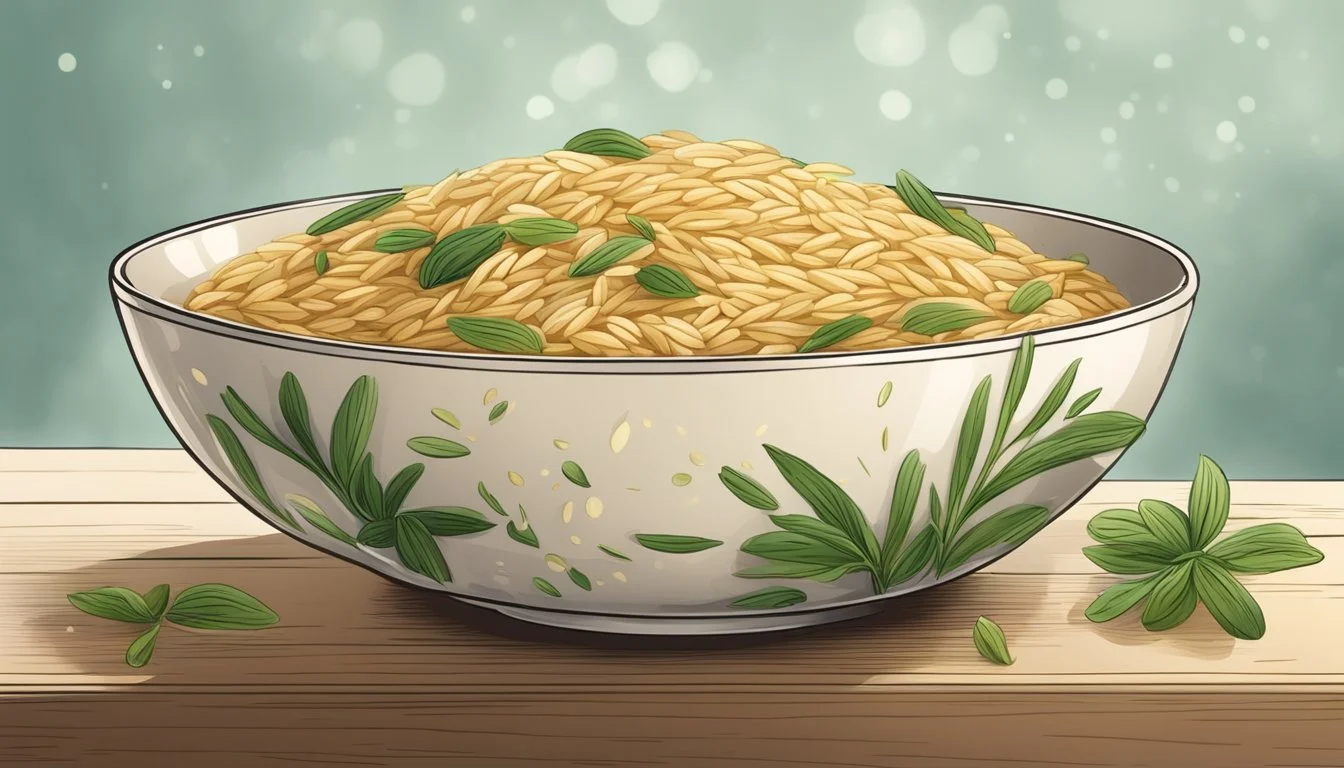Does Orzo Go Bad?
Understanding Shelf Life and Storage
Orzo, often mistaken for rice due to its shape, is a versatile pasta used in various cuisines. Many wonder about its shelf life and whether it goes bad. Properly stored, a package of dry orzo can maintain its best quality for up to 3 years at room temperature. This makes it an excellent pantry staple that can be used over many meals without worry about quick spoilage.
Cooked orzo, on the other hand, has a much shorter longevity. When stored in the refrigerator, its shelf life typically ranges from 3 to 5 days. For those looking to extend this period, freezing cooked orzo is an option that can preserve it for up to 2 months, provided it is stored in airtight containers.
Keeping orzo fresh involves a few simple but crucial practices. Unopened dry orzo should be kept in a tightly sealed package, and once opened, it’s best transferred to an airtight container. By following these steps, orzo can be enjoyed at its best quality for a significant period, ensuring it remains a valuable component of your kitchen staples.
Understanding Orzo
Orzo is a type of pasta that resembles rice and is known for its versatility in various dishes. This section explores what orzo is, its nutritional content, and the different varieties available.
What Is Orzo?
Orzo, also known as risoni, is a small, rice-shaped pasta originating from Italy. It's traditionally made from semolina flour, derived from durum wheat, which gives it a firm texture suitable for various culinary uses. The word "orzo" means barley in Italian, but this pasta is not related to the grain itself.
Orzo's size and shape make it ideal for soups, salads, and side dishes. It absorbs flavors well, making it a popular choice in Mediterranean and Italian cuisine.
Nutritional Profile of Orzo
Orzo offers a balanced nutritional profile, making it a valuable addition to meals. A standard serving (1/3 cup dry) contains approximately:
Calories: 200
Carbohydrates: 42 grams
Protein: 7 grams
Being made from durum wheat, orzo is not gluten-free. However, gluten-free alternatives made from rice or corn are available. Orzo also provides essential vitamins and minerals such as B vitamins, iron, and thiamine, contributing to its nutritional value.
Different Types of Orzo
Beyond traditional durum wheat orzo, there are various types catering to different dietary needs.
Whole Wheat Orzo: Offers more fiber and nutrients than refined orzo.
Gluten-Free Orzo: Made from rice or corn, suitable for those with gluten intolerance.
Flavored Orzo: Some orzo comes infused with vegetables or herbs, like spinach or tomato, adding both color and taste to dishes.
Each variety provides unique benefits and can be selected based on personal preference or dietary requirements.
Proper Storage Conditions for Orzo
Orzo can be stored in various ways to maximize its shelf life and maintain its quality. Proper handling for dry, cooked, and frozen orzo ensures it remains safe and delicious for consumption.
Storing Dry Orzo
Dry orzo, a pantry staple, should be stored at room temperature. To keep it at its best quality, transfer it to a covered, airtight container. This helps prevent moisture and pests from affecting the orzo.
Tips:
Use airtight containers to lock in freshness.
Store in a cool, dry place away from direct sunlight.
When kept properly, dry orzo can maintain its quality for about 2-3 years.
Refrigerating Cooked Orzo
Cooked orzo must be stored in the fridge to ensure safety. Place the orzo in resealable plastic containers or airtight containers to prevent exposure to air and contaminants.
Guidelines:
Refrigerate cooked orzo within 2 hours of cooking.
Keep the fridge temperature below 40°F.
Cooked orzo typically lasts 3-5 days in the fridge but can stretch to a week if stored correctly.
Monitor the smell and appearance; discard if there's any sign of spoilage.
Freezing Orzo
Freezing extends the shelf life of cooked orzo. To freeze, cool the orzo completely after cooking and divide it into portion sizes. Use freezer-safe bags or containers, ensuring they are airtight.
Steps:
Cool cooked orzo thoroughly.
Portion into resealable plastic freezer bags or airtight containers.
Label containers with the date for tracking.
Store in the freezer for up to 1-2 months.
For best results, thaw in the refrigerator before reheating.
Proper storage of orzo, whether dry or cooked, ensures it remains fresh and safe to eat. Using airtight containers and controlling temperatures are key to preserving its quality.
Identifying Spoilage Signs in Orzo
Knowing how to spot spoilage in orzo is crucial for ensuring food safety and maintaining the quality of your meals. Look for visual changes, changes in texture, and off odors.
Visual Changes and Mold
Visual inspection is the first step in identifying spoiled orzo. Look for discoloration, such as dark or off-colored spots, which can indicate spoilage. Mold is another clear indicator; it may appear as fuzzy patches or unusual spots on the orzo.
Ensure that the orzo is free of any visible contaminants before using it. These changes are often a sign that bacteria have begun to grow, making the orzo unsafe to eat.
Texture and Flavor Detection
Texture and flavor changes are good indicators of orzo that has gone bad. Cooked orzo should feel firm and retain its shape. If it becomes mushy or excessively slimy, it may have spoiled.
For dry orzo, a gritty or excessively hard texture can indicate it has been compromised. Off odors or unusual flavors are strong signs of spoilage. If the orzo smells sour or rancid, it's best to discard it.
Safe Practices to Discourage Spoilage
Following safe storage practices helps in extending the shelf life of orzo. Cooked orzo should be stored in airtight containers in the fridge and consumed within a few days for optimal safety. Dry orzo should be kept in a cool, dry place, and once opened, it’s best to transfer it to an airtight container.
Freezing cooked orzo can also help in extending its usability, but it should be tightly sealed to prevent freezer burn. Always check the storage conditions and adhere to recommended timelines to ensure the orzo remains safe to eat.
Preparing and Cooking Orzo
Orzo, a versatile rice-shaped pasta, can be prepared and cooked in various methods to suit different recipes. Key techniques include boiling orzo to achieve the perfect texture, reheating it effectively, and incorporating it into diverse dishes.
Boiling Orzo: Basic Technique
To cook orzo, start with boiling water. Fill a large pot with water, using a ratio of 4 quarts of water per pound of orzo. Add salt—about 2 tablespoons per pound of pasta—to season the water.
Bring the water to a rolling boil, then add the orzo. Stir occasionally to prevent sticking. Boil the orzo for 7-10 minutes or until al dente, which means it should be firm but not hard. Drain the cooked orzo using a colander and rinse briefly with cold water to stop the cooking process if necessary.
Reheating Methods
Reheating orzo can be done using different methods to retain texture and flavor. For the stove method, place the orzo in a pan, add a splash of water or broth, and warm over medium heat, stirring occasionally.
In the microwave, transfer the orzo to a microwave-safe dish, sprinkle a little water on top, and cover. Heat for 1-2 minutes, stirring halfway through. Ensure it’s heated evenly to avoid dry patches.
For a larger batch, the oven method is effective. Preheat the oven to 200°F, place the orzo in a casserole dish, and cover. Reheat for about 20 minutes until it’s warmed through.
Using Orzo in Recipes
Orzo is highly adaptable and can be used in numerous dishes. In salads, mix cooled orzo with vegetables, herbs, and a light dressing. It's excellent in soups, adding a hearty component.
For casseroles, layer orzo with meats, vegetables, and sauces, then bake until bubbly. Orzo pilaf is another popular dish, where the pasta is toasted first and then simmered in broth with aromatics like onions and garlic.
Leftover orzo can be transformed into new dishes; for example, orzo risotto where the cooked orzo is simmered with stock and cheese until creamy. Whether as a side dish or main course, orzo complements various ingredients, enhancing many recipes.
Maximizing Orzo's Quality in Dishes
Achieving the best quality for orzo in dishes involves careful cooking and creative serving methods. This ensures the orzo's flavor, texture, and color enhance any meal.
Optimal Cooking Tips
Cooking orzo to the perfect al dente texture is essential. Boil water in a large pot and add a pinch of salt. Cook the orzo for 7-10 minutes, tasting it periodically. Draining it immediately after reaching desired firmness prevents overcooking.
To prevent sticking, toss the drained orzo with a little olive oil or butter. This not only enhances the flavor but also maintains the texture. For pilaf-style orzo, toast the orzo in oil before adding liquid. This method adds a nutty flavor and a firmer texture.
Innovative Serving Ideas
Orzo's versatility makes it suitable for a variety of dishes. In orzo pasta salads, cold orzo can be combined with fresh vegetables, meat, and tailored seasoning. Adding a mix of colorful veggies and a zesty vinaigrette provides a vibrant, refreshing dish.
For a robust main course, substitute orzo for rice in pilaf-style or use it in creamy risottos. Enhancing orzo with herbs and spices ensures it complements various meat and vegetable dishes. It’s ideal for soups, lending a delightful texture and pleasant flavor.
By incorporating these cooking and serving tips, orzo can elevate the quality of any meal.







